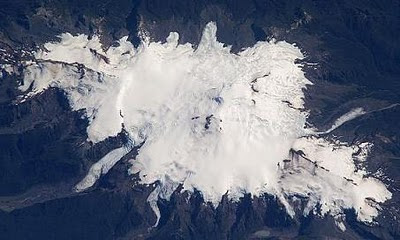Although the country's volcanic activity dates back to the Precambrian period, volcanism in Canada continues its activity in Western and Northern Canada, forming part of an encircling chain of volcanoes and frequent earthquakes around the Pacific Ocean called the Pacific Ring of Fire. But because volcanoes in Western and Northern Canada are in remote rugged areas and the level of volcanic activity is less frequent than with other volcanoes around the Pacific Ocean, Canada is commonly thought to occupy a gap in the Pacific Ring of Fire between the volcanoes of western United States to the south and the Aleutian volcanoes of Alaska to the north. However, the mountainous landscape of Western and Northern Canada includes more than 100 volcanoes that have been active during the past two million years and have claimed many lives. Volcanic activity has been responsible for many of Canada's geological and geographical features and mineralization, including the nucleus of North America called the Canadian Shield.
Volcanism in Canada has produced lava flows, lava plateaus, lava domes, cinder cones, stratovolcanoes, shield volcanoes, submarine volcanoes, calderas, diatremes, and maars, along with examples of more less common volcanic forms such as tuyas and subglacial mounds. It has a very complex volcanological history spanning from the Precambrian period at least 3.11 billion years ago when this part of the North American continent began to form.
Volcanism has led to the formation of hundreds of volcanic areas and extensive lava formations across Canada, indicating volcanism played a major role in shaping its surface. The country's different volcano and lava types originate from different tectonic settings and types of volcanic eruptions, ranging from passive lava eruptions to violent explosive eruptions. Canada has a rich record of very large volumes of magmatic rock called large igneous provinces. They are represented by deep-level plumbing systems consisting of giant dike swarms, sill provinces and layered intrusions. The most capable large igneous provinces in Canada are Archean (3,800–2,500 million years ago) age greenstone belts containing a rare volcanic rock called komatiite.
Eve Cone in Canada
 Aerial View of Michinmahuida
Aerial View of Michinmahuida




















